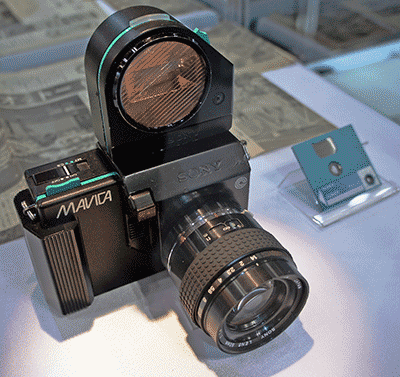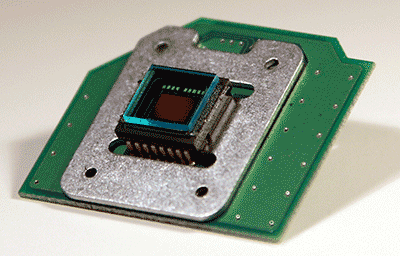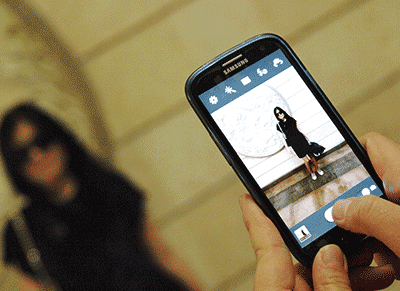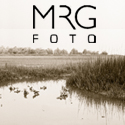Digital Photography
The history of digital photography is short. The first digital camera,the Sony Mavica, was introduced in 1981 but it didn’t take digital photos in the same way today’s cameras do. The images were low resolution, only 570 x490 and only 25 images could be stored on the removable floppy disc. The technology was based on existing CCD technology (charge-coupled device, invented by George Smith and Willard Boyle in 1969) and the camera was expensive, out of reach for most people. Early uses for digital cameras were military and scientific, and later, medical and news.

Sony Mavica digital camera; 1981
Digital cameras use a device called an image sensor, which are silicon chips containing millions of photosensitive codes called photosites. When the camera shutter is opened, each photosite records the amount of light hitting it by accumulating a charge - the higher the intensity the higher the charge. This lightness is then stored as a series of numbers that dictate the color or brightness of dots on the screen or sent to the printer.

CCD Image Sensor from a 2. 1 megapixel digital camera
In 1986, Kodak developed the first megapixel sensor, capable of recording 1.4 million sensors producing a 5 x 7” quality print. In 1990, Logitech offered the first consumer digital camera to the public, the Dycam Model 1. The camera held 32 low resolution (by today’s standards) images and had to be connected to a PC to download the images. By 1991, Kodak produced the first professional quality digital camera. By 1996, multiple manufacturers were offering consumers 1 megapixel digital cameras and the prices began to drop below $1,000
From there, the technology rapidly improved with the miniaturization of its sensors, allowing cameras to be physically smaller but capable of producing significantly better images. Eventually, this improved technology enabled the production of camera phones, the first of which was introduced by Samsung in 2000. The recently released Nokia Lumia 1020 Smartphone is equipped with a 41 megapixel camera sensor and is offered for around $100.
Digital cameras come in many forms - from Smartphone cameras, “point and shoot” cameras to professional quality DSLR cameras. Photographers can shoot most of the same photographic techniques with digital cameras as with film cameras. In addition, the many photo software programs available, such as Adobe Photoshop, make altering and fixing digital photos quick and simple. Social networks have made sharing photographs easy also, so that shooting to presenting has become almost instantaneous.

Smartphone digital camera
The images above are in the public domain.
Sites about the history of digital photography:
Bob Brooke: Digital History
Extreme Tech: History of Digital Photography
Photography Tuts Plus: History of Photography part 3
Some sites about digital photography:
TED: Photography
National Geographic: Photography
Wikipedia: Digital Single-Lens Reflex Camera
Digital Trends: Camera Phone History
Wikipedia: Charge Coupled Device
Some sites with tips and tutorials about digital photography:
Photo.net: Learn about Photography
Photography Tuts
Free Camera Tutorials
PSD Collector: 35 Photoshop Photo Editing Tutorials
Digital Photography School: 19 Portrait Photography Tutorials
Smashing Magazine: 50 Excellent Digital Photography Photoshop Tutorials
Digital Camera World: Cyanotype Process Digital Photography
Digital Photography School: ISO Settings
Petapixel: Film Photography Techniques for the Digital Photographer
Strobist: Tips on Lighting for Photography
Stuck in Customs: HDR Tutorials
Some contemporary artists who work with digital photography:
Oliver Meckes
Underwater Photography
Edward Burtynsky
Jill Greenberg
David Maisel
Bob Sacha
Alexander Semenov
Ron Davies
David Hobby


